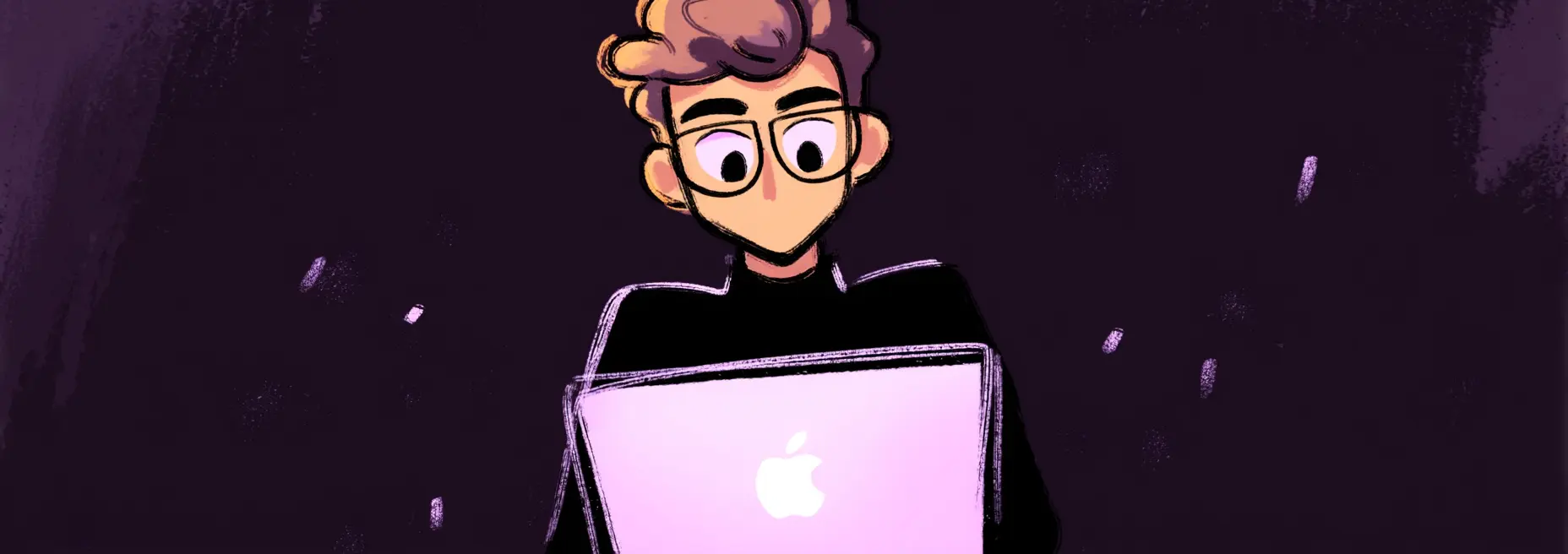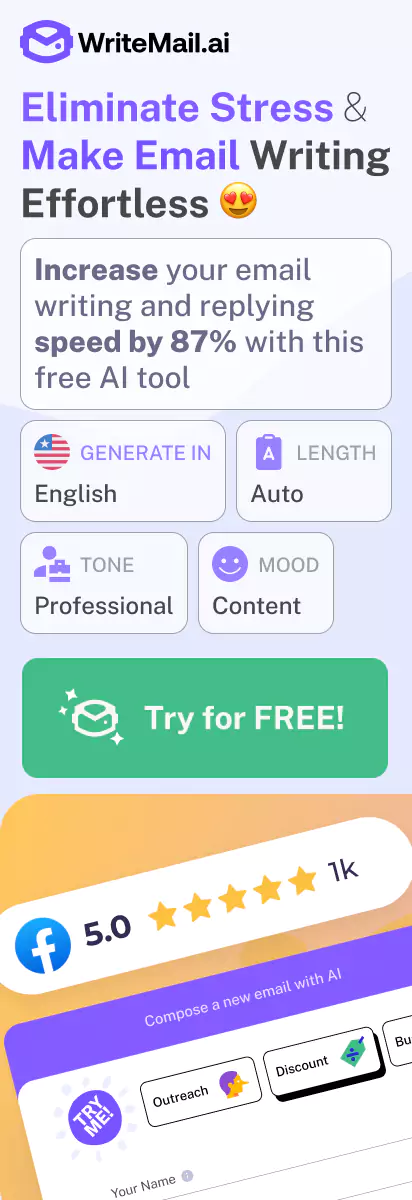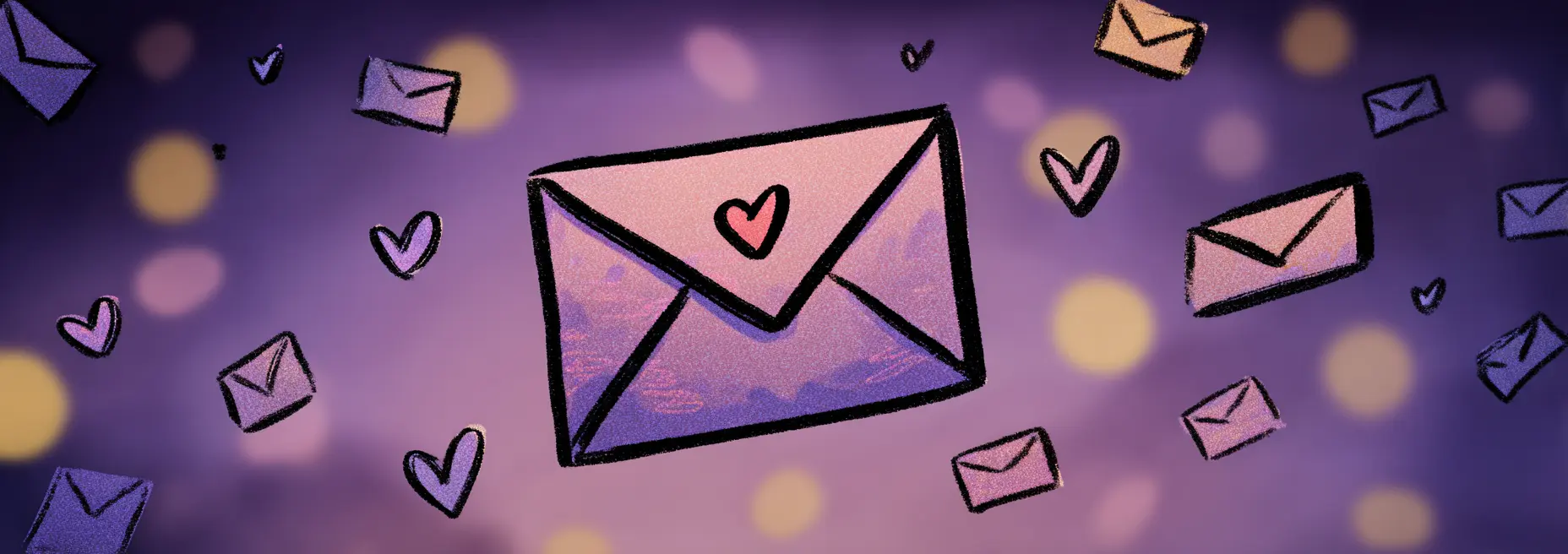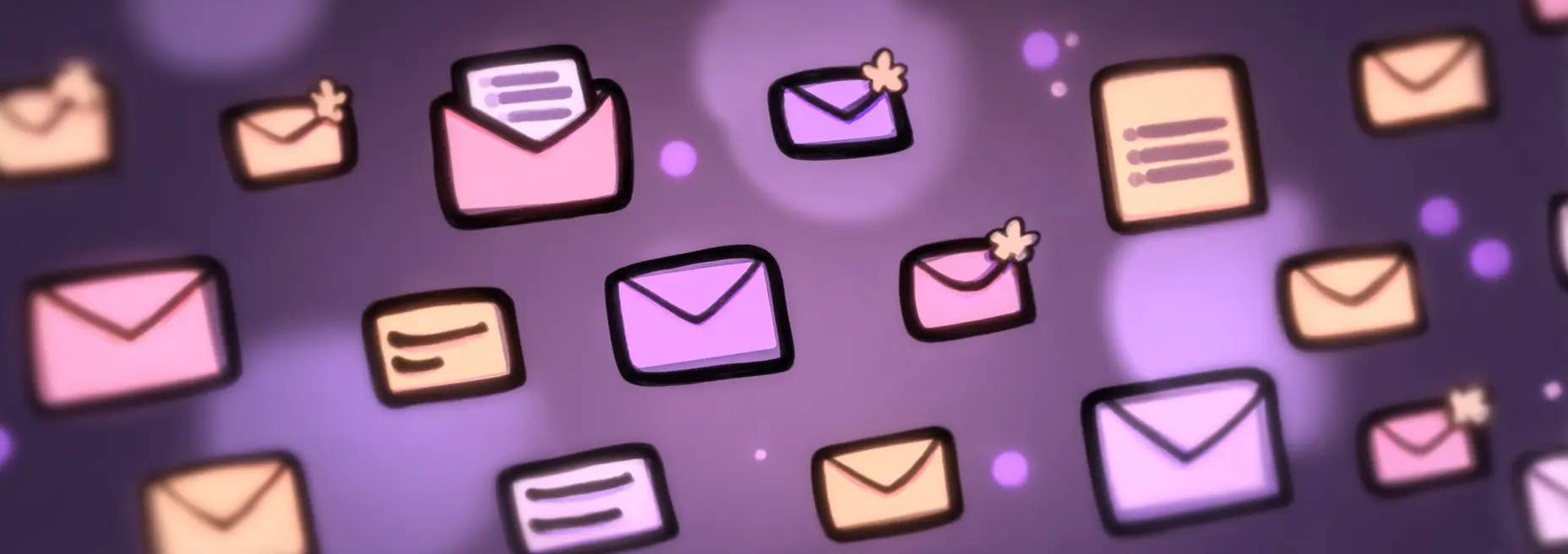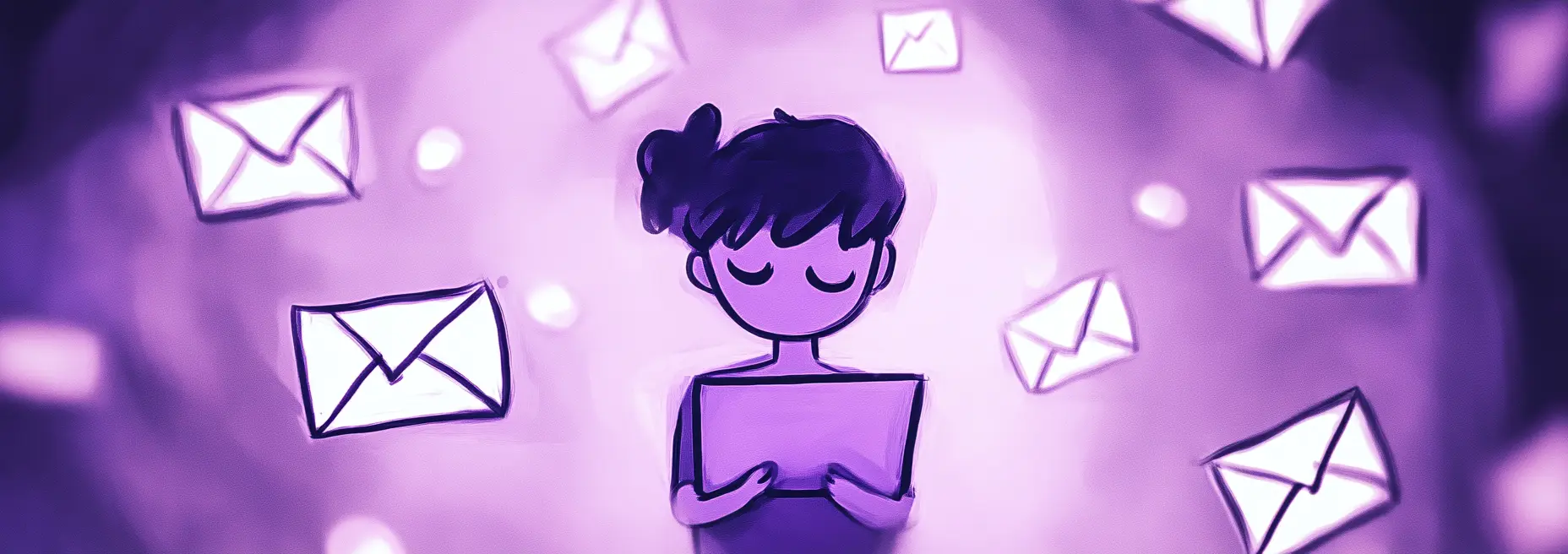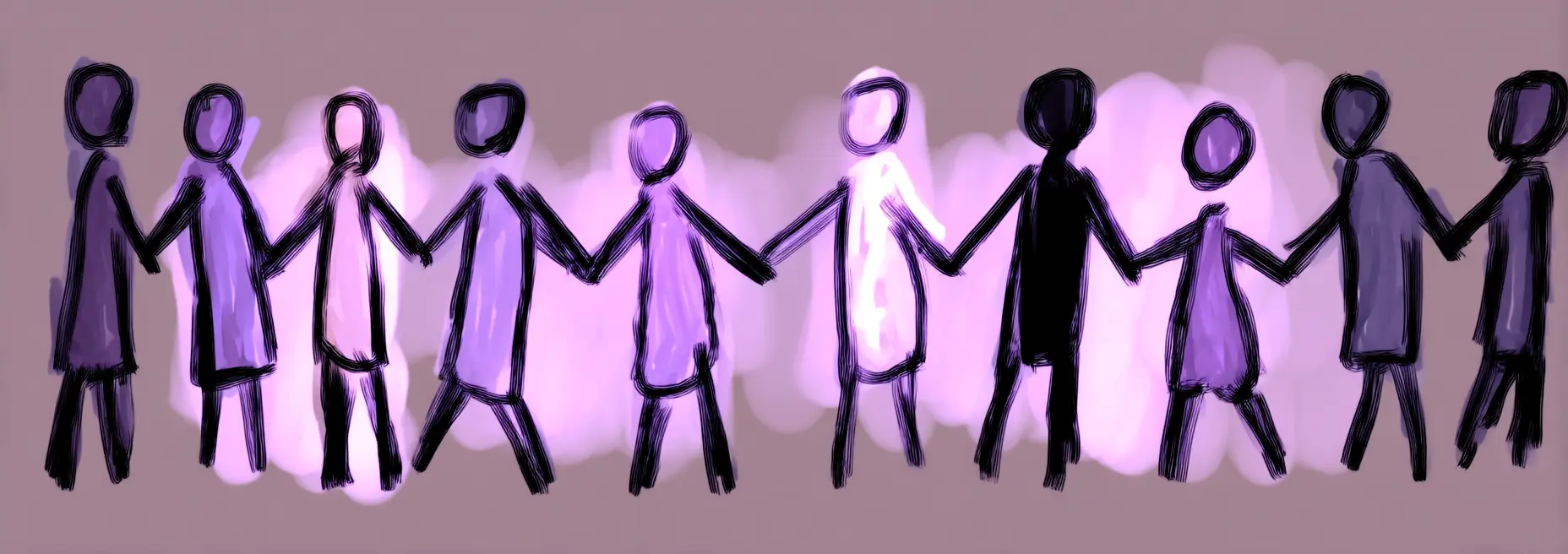Have you ever hit “send” on an important email and then… nothing? The silence is deafening. I’ve been there too, and I’ve learned something crucial: how you end your email might be just as important as how you begin it.
According to research by Boomerang, emails with clear closing lines that include a specific call to action receive 36% more responses than those with vague or missing closings. That’s a significant difference when you consider the average professional sends and receives 121 business emails daily.
Think about your own inbox for a moment. When you’re racing through dozens of messages, which ones get your attention? Which ones prompt you to actually respond? I’m willing to bet it’s the ones that make it crystal clear what they want from you.
In this guide, I’ll walk you through exactly how to craft email closings that don’t just look professional but actually get results. You’ll discover specific closing phrases that boost response rates, learn when to use formal versus casual sign-offs, and see real-world examples that you can adapt for your own communication needs.
Whether you’re following up with a potential client, communicating with your team, or reaching out to a new connection, you’ll find actionable strategies to ensure your emails accomplish their goals. No more sending messages into the void and hoping for the best.
By the time you finish reading, you’ll have a toolkit of effective closing techniques that will transform your email communication from forgettable to impossible to ignore. Let’s start with understanding why your email’s final lines matter so much more than you might think…
The Anatomy of an Effective Email Closing
When you’re wrapping up a professional email, there’s more to consider than simply signing your name. An effective email closing follows a specific structure that signals professionalism and clarity while encouraging the recipient to take action. Let me walk you through the essential components of a strong email closing and show you how to put them together effectively.
Essential Components of a Professional Email Closing
A complete and effective email closing typically consists of three key elements:
- Call-to-action: This is where you clearly state what you want the recipient to do next. Whether you’re requesting a meeting, asking for feedback, or seeking a decision, a specific call-to-action removes ambiguity and increases your chances of getting a response.
- Expression of gratitude/goodwill: Taking a moment to express appreciation or extend good wishes builds rapport and leaves a positive impression. This could be as simple as “Thank you for your consideration” or “I appreciate your time and expertise.”
- Sign-off phrase: This is your final farewell before your name. The sign-off you choose signals the formality and nature of your relationship with the recipient. It serves as a tonal punctuation mark that can reinforce the overall impression of your message.
While these three elements form the foundation of your closing, the order can be flexible. You might start with gratitude, follow with your call-to-action, and end with your sign-off. What matters most is that all three elements work together cohesively.
Proper Formatting and Punctuation Rules
Even the most thoughtful closing can lose its impact if it’s not formatted correctly. Here are the key formatting rules you should follow:
- Punctuation after sign-offs: Always use a comma after your sign-off phrase (e.g., “Best regards,” not “Best regards”).
- Spacing and paragraphs: Keep your closing elements visually separated from the body of your email with a blank line. This creates a clean visual break that helps the reader distinguish between your message content and closing elements.
- Signature placement: Your name should appear on a new line after your sign-off. If you’re including additional contact information or a formal signature block, place this below your name with each element on a separate line.
- Multiple-paragraph closings: If your call-to-action or expression of gratitude requires more than a brief line, you can use multiple paragraphs in your closing. Just ensure there’s still a visual break between these paragraphs and your final sign-off.
Remember that consistency is key. Whatever formatting choices you make, apply them uniformly across your professional emails to reinforce your attention to detail.
The Importance of Context-Appropriate Formality Levels
One size definitely doesn’t fit all when it comes to email closings. The level of formality you use should be carefully calibrated based on:
- Your relationship with the recipient: Are you writing to a longtime colleague or a potential client you’ve never met?
- The purpose of your email: A job application requires a different level of formality than a team update.
- Industry expectations: Some sectors (like legal or finance) typically maintain more formal communication standards than others (like creative or tech industries).
- Previous communication patterns: If the recipient consistently uses casual language with you, it’s usually appropriate to match their tone.
I’ve found that erring slightly on the side of formality is safer than being too casual, especially in new professional relationships. You can always adjust to a more relaxed tone as the relationship develops, but it’s harder to recover from an initial impression that’s too casual.
Example: Anatomy of an Effective Email Closing
In the example above, notice how each component serves a specific purpose:
- The call-to-action is specific about what’s needed (review the proposal), when it’s needed (by next Thursday), and why it matters (to finalize before the stakeholder meeting).
- The expression of gratitude is personalized to acknowledge the recipient’s specific contributions, making it more meaningful than a generic “thanks.”
- The sign-off (“Best regards”) strikes an appropriate balance for an established professional relationship—neither too formal nor too casual.
When you combine these elements thoughtfully, your email closing becomes more than just a formality—it becomes a powerful tool that reinforces your message and encourages the action you desire. In the next section, I’ll dive deeper into choosing the right sign-off phrase for different professional situations.
Standard Professional Sign-offs and When to Use Them
Choosing the right sign-off for your professional emails isn’t just about etiquette—it’s about relationship management. I’ve found that matching the closing to both your relationship with the recipient and the purpose of your message dramatically increases your effectiveness. Let me walk you through the spectrum of professional email closings and when you should use each one.
Formal Closings for New Contacts and Hierarchical Relationships
When you’re reaching out to someone for the first time or communicating with someone in a position of authority, formality signals respect and professionalism. These closings establish appropriate boundaries and demonstrate your understanding of professional protocol.
Best formal options:
- “Sincerely,” – The classic formal closing that works in virtually any professional situation where you don’t know the recipient well.
- “Respectfully,” – Particularly appropriate when addressing senior executives, government officials, or in situations with clear hierarchical differences.
- “Regards,” – A versatile formal option that acknowledges the professional relationship without being overly stiff.
- “With appreciation,” – Useful for formal situations where you’re expressing gratitude for consideration or assistance.
- “Yours truly,” – An old-school but still acceptable formal closing for traditional business contexts.
I recommend reserving these formal closings for initial communications, correspondence with senior leadership, or situations where maintaining professional distance is important. Using overly formal closings with peers or established contacts can create an unnecessary sense of distance.
Semi-formal Options for Established Professional Contacts
Once you’ve established a working relationship, you can often shift to semi-formal closings that maintain professionalism while acknowledging your ongoing connection.
Best semi-formal options:
- “Best regards,” – My go-to semi-formal closing that strikes the perfect balance between professionalism and warmth.
- “Kind regards,” – A friendly yet professional option that works well for regular business communications.
- “Warm regards,” – Slightly more personable, ideal for contacts you’ve worked with multiple times.
- “All the best,” – Conveys good wishes while maintaining professional boundaries.
- “Thank you,” – Effective when you’re making a request or expressing appreciation for something specific.
You’ll find these closings particularly useful for ongoing business relationships with clients, vendors, or colleagues from other departments whom you know but aren’t necessarily close with. They acknowledge your professional relationship without presuming familiarity.
Friendly Professional Closings for Colleagues and Recurring Contacts
For team members, close colleagues, and contacts you’ve developed a friendly rapport with, more casual closings can strengthen your connection while still remaining workplace-appropriate.
Best friendly professional options:
- “Cheers,” – A light, positive closing that works well in collaborative environments.
- “Thanks,” or “Thanks again,” – Simple and appreciative for regular team communication.
- “Best,” – Concise but warm, ideal for frequent communications with familiar contacts.
- “Looking forward,” – Conveys enthusiasm and ongoing connection when you’ll be following up soon.
- “Talk soon,” – Creates continuity in regular working relationships.
I’ve found these closings work especially well in team settings, with colleagues you collaborate with regularly, or business relationships that have developed a personal element over time. They maintain professionalism while acknowledging the more relaxed nature of your relationship.
Example: Adapting Your Closing Based on Your Relationship
Notice how the same basic request is tailored with different closings based on the relationship: formal for a new or senior contact, semi-formal for an established professional relationship, and friendly professional for a close colleague.
Contextual Considerations for Choosing Your Sign-off
Beyond your relationship with the recipient, consider these additional factors when selecting your email closing:
- Industry culture – Some industries (like law, finance, government) tend to maintain more formal communication standards, while others (like tech, creative fields, startups) often embrace more casual language.
- Company culture – Align your closing with your organization’s communication style. If you’re unsure, observe how senior leaders sign their emails.
- Purpose of your email – Requests, especially to people you don’t know well, may warrant more formal closings, while collaborative discussions with team members can use friendlier options.
- Previous communications – Pay attention to how your recipient has closed emails to you in the past—matching their level of formality is usually a safe approach.
When in doubt about the appropriate level of formality, I recommend erring on the slightly more formal side. You can always adjust to a more casual tone in future communications as your relationship develops, but it’s harder to re-establish formality once you’ve set a casual precedent.
Remember that consistency matters—while you should adapt your closing to different recipients, maintaining a consistent closing with the same person helps reinforce your professional identity in their mind. The right closing signals that you understand the nature of your relationship and respect the boundaries that come with it.
Crafting Action-Oriented Closing Lines
Have you ever sent an email that seemed to disappear into the void? You’re not alone. I’ve found that the most effective professional emails don’t just end with a pleasant sign-off – they clearly communicate what should happen next. When you master action-oriented closing lines, you transform your emails from passive messages into productive conversations that drive results.
How to Include Clear Next Steps Without Being Demanding
The secret to an effective action-oriented closing is striking the perfect balance between clarity and courtesy. You want to guide your recipient toward a specific action without coming across as bossy or presumptuous.
Try these approaches when you need to include clear next steps:
- Use the “I look forward to” formula: This gentle phrase implies an expected action without directly commanding it. Instead of “Send me the report by Friday,” try “I look forward to reviewing the report by Friday.”
- Frame actions as benefits: Show how taking action helps the recipient. Compare “Please respond with your decision” to “Your input by Thursday will help us finalize the project plan before the weekend.”
- Offer options when possible: When you provide choices, you give the recipient agency. “Would you prefer to discuss this over a call on Monday at 2 PM or Tuesday at 10 AM?” works better than “Let’s talk on Monday.”
- Use polite language: Words like “please,” “would you mind,” and “when you have a moment” soften your requests without diminishing their importance.
Techniques for Setting Expectations About Timing and Follow-up
When I’m sending important emails, I’ve learned it’s crucial to establish clear timelines. Without them, your requests can easily fall to the bottom of someone’s priority list.
- Be specific about timeframes: Replace vague phrases like “soon” or “as soon as possible” with concrete timeframes: “by Thursday,” “within the next two business days,” or “before our meeting next week.”
- Indicate your own timeline: Sharing when you’ll follow up creates accountability on both sides. “If I don’t hear from you by Friday, I’ll follow up early next week” sets clear expectations.
- Acknowledge their time constraints: When appropriate, recognize that your recipient is busy. “I know you’re preparing for the conference, so even a brief response by Wednesday would be helpful” shows respect while maintaining your timeline.
- Connect deadlines to consequences or benefits: Explain why timing matters. “Your approval by Thursday will allow us to implement the changes before the month-end rush” provides context for your timeline.
Using Soft Deadlines to Encourage Prompt Responses
Did you know that emails with specific timeframes see a 36% higher response rate? That’s because soft deadlines create a sense of gentle urgency without the pressure of hard deadlines.
Here’s how you can effectively implement soft deadlines in your email closings:
- Create natural timing hooks: Tie your request to an existing event or deadline: “Since the team meeting is on Friday, your thoughts by Thursday morning would be particularly valuable.”
- Use the “if possible” qualifier: This phrase maintains urgency while acknowledging flexibility: “If possible, I’d appreciate your feedback by Wednesday so I can incorporate it into the final draft.”
- Set expectations for your own actions: “I’ll be finalizing the proposal on Thursday afternoon, so any input before then would be greatly appreciated” establishes a natural deadline.
- Provide a rationale: People respond better when they understand why their timely action matters. “Your input by Tuesday will help us meet the client’s expectations for a mid-week update.”
Email Examples: From Weak to Strong Action-Oriented Closings
Notice how the strong closing creates clarity about:
- What action is needed (review mockups)
- By when (Thursday at 3 PM)
- Why it matters (to begin production and stay on schedule)
- An alternative option (a call if there are concerns)
When you craft action-oriented closings, you’re not just ending your email – you’re setting the stage for what happens next. By clearly communicating your expectations and making it easy for recipients to take action, you’ll dramatically improve your email effectiveness and get the results you need.
Remember that the most successful action-oriented closings are those that align with the relationship you have with the recipient. As you continue to refine your approach, you’ll develop a natural sense for how directive you can be with different people in your professional network.
Personalization Strategies That Increase Response Rates
When you’re trying to get a response to your email, personalization can be your secret weapon. I’ve seen firsthand how a thoughtfully personalized closing can transform an ordinary email into one that actually gets results. According to recent research, emails with personalized closings receive 15% higher response rates than generic ones. That’s a significant improvement you can achieve with just a few extra seconds of effort!
Why Personalization Works
Personalization works because it triggers a psychological principle called the “reciprocity effect.” When you take the time to craft a message that acknowledges the recipient as an individual, they feel more obligated to return that level of consideration by responding. It’s a simple human truth—we respond better to people who demonstrate they’ve thought about us specifically.
Effective Personalization Techniques
Reference Previous Interactions:
- Mention a previous conversation or meeting: “Looking forward to building on our discussion from last week’s conference.”
- Acknowledge past help: “Thanks again for your insights on the Henderson project—they’ve been invaluable.”
- Follow up on personal details they’ve shared: “Hope your daughter’s recital went well last weekend!”
Create Contextual Relevance:
- Connect to the recipient’s recent achievements: “Congratulations again on your team’s impressive Q3 results.”
- Reference industry developments relevant to them: “In light of the recent regulatory changes we discussed…”
- Acknowledge their expertise: “Given your extensive experience with international markets, your perspective would be particularly valuable.”
Incorporate Seasonal or Timely References:
- Use appropriate holiday references: “Wishing you a restful Thanksgiving break before we reconnect.”
- Mention relevant business cycles: “As we approach the end of the fiscal year…”
- Reference timing constraints: “I realize you’re preparing for the board meeting next week, so a quick response by Friday would be greatly appreciated.”
I’ve found that the most effective personalized closings combine a relevant reference with warmth and authenticity. The key is to be specific enough to show attentiveness without appearing like you’ve kept excessive notes on their personal life (which can feel intrusive).
Balancing Personalization with Professionalism
While personalization improves response rates, you should still maintain appropriate professional boundaries. I recommend these guidelines:
- Keep personal references brief – a single sentence is typically sufficient
- Ensure relevance to your professional relationship or the email’s purpose
- Match the tone to your existing relationship – more casual with close colleagues, more formal with executives or new contacts
- Avoid overly personal topics that might make the recipient uncomfortable
Personalization Examples for Different Scenarios
Example: Personalization Techniques in Action
Notice how the closing paragraph accomplishes multiple objectives:
- References a specific previous conversation (“you mentioned you’re heading to the Digital Marketing Summit”)
- Creates a contextual connection (both attending the same event)
- Provides a natural reason for future interaction
- Maintains professional relevance while building rapport
Adapting Personalization Based on Relationship Stage
The degree and type of personalization you use should evolve with your professional relationship:
- New contacts: Reference how you were connected or specific points from your initial meeting
- Developing relationships: Mention recent interactions and shared professional interests
- Established relationships: Include more specific references to ongoing projects and appropriate personal touches
When you’re consistent with thoughtful personalization, you’ll notice your professional relationships deepening over time, which naturally leads to higher response rates and better collaboration.
Leveraging Technology for Personalization at Scale
If you manage a large volume of correspondence, you might wonder how to personalize effectively without spending hours on email. WriteMail.ai’s personalization features can automatically suggest relevant context-based closings by analyzing your previous interactions with contacts and incorporating appropriate references based on your relationship history. This allows you to maintain the response rate benefits of personalization while streamlining your workflow.
Remember that true personalization isn’t just using someone’s name in an email—it’s demonstrating that you’ve paid attention to who they are, what matters to them, and the specific context of your relationship. When you close your emails with this level of thoughtfulness, you’ll consistently see higher response rates and stronger professional connections.
6. Common Closing Mistakes and How to Avoid Them
Even when you’ve crafted a perfect email body, a weak or inappropriate closing can undermine your entire message. I’ve seen countless professionals sabotage their communication effectiveness with closing missteps. Let’s examine the most common closing mistakes I’ve observed and how you can avoid them in your professional emails.
Overused or Clichéd Closings That Diminish Impact
When you rely on tired, generic closings, your message loses its personal touch and memorability. Think about how many emails you’ve received ending with a bland “Thanks” or “Regards.” These closings are perfectly acceptable in many contexts, but they’ve become so common that they often fail to make any impression at all.
Closings to reconsider:
- “Yours truly” (feels outdated and overly formal in most modern business contexts)
- “Sincerely yours” (too intimate for most professional relationships)
- “Looking forward to your response” (generic and creates no urgency)
- “Talk soon” (vague and potentially presumptuous)
Instead of defaulting to these worn-out phrases, I recommend customizing your closing to reflect both your relationship with the recipient and the specific context of your email. This small effort shows thoughtfulness and attention to detail.
Tone Mismatches Between Email Body and Closing
Research shows that consistency in communication increases persuasiveness by up to 20%. When you write a formal, detailed proposal email but end with “Cheers!” or craft a friendly team update that concludes with “Respectfully yours,” you create cognitive dissonance for your reader. This jarring shift in tone can undermine trust and confuse your message’s intent.
I always remind my clients to ensure their closing aligns with the overall tone of their email. If you’re writing a serious complaint, don’t end with an enthusiastic “Have a fantastic day!” Similarly, a collaborative brainstorming email shouldn’t close with an overly formal “Most sincerely.”
Signs of tone mismatch to watch for:
- Using casual closings (“Later!” or “Catch you soon!”) after formal requests
- Employing stiff, distant language after a warm, personal message
- Including humor or informality in sensitive or serious communications
- Switching from professional to overly familiar language in the closing
Inappropriate Formality Levels
Judging the right level of formality can be challenging, especially in our increasingly casual business culture. However, erring on either extreme can damage professional relationships. Too formal, and you might come across as aloof or unapproachable. Too casual, and you risk appearing unprofessional or disrespectful.
Context matters enormously here. Consider your relationship history, industry norms, organizational culture, and the specific purpose of your email. For example, when you’re writing to a potential client for the first time, “Best regards” offers an appropriate balance of professionalism and warmth, while “Cheers” might be perfect for a colleague you’ve worked with for years.
Formality assessment questions to ask yourself:
- What is the hierarchical relationship between you and the recipient?
- How established is your professional relationship?
- What is customary in your industry and organization?
- What cultural factors might influence formality expectations?
- What is the purpose and content of your message?
Email Closing Examples: Before and After
Example 1: Inappropriate Casualness in a New Business Relationship
Improved Version:
Example 2: Overly Formal Tone in an Established Relationship
Improved Version:
Using Technology to Improve Your Email Closings
If you struggle with selecting appropriate closings or maintaining consistent tone in your emails, you’re not alone. Modern AI writing assistants like WriteMail.ai can analyze your message content and suggest closings that match both your relationship with the recipient and your email’s overall tone. These tools can identify potential tone inconsistencies and offer improvements that help maintain a cohesive message from greeting to signature.
When you’re sending dozens of emails daily across different contexts, these AI assistants can save you valuable time while ensuring your closings always strike the right note, potentially avoiding awkward situations or miscommunications that could damage professional relationships.
Final Thoughts on Avoiding Closing Mistakes
The way you end your emails isn’t just a formality—it’s your final opportunity to reinforce your message and leave a positive impression. By avoiding these common closing mistakes, you’ll ensure your emails achieve their intended purpose and maintain your professional credibility.
Remember that the most effective email closings are authentic, appropriate to the context, and consistent with your overall message tone. When in doubt, I always suggest erring slightly on the side of formality until you’ve established a clear communication pattern with your recipient.
Advanced Techniques for Specific Email Goals
Different types of emails serve different purposes, and your closing lines should be tailored to achieve specific goals. I’ve found that adapting my closing strategies based on the email’s objective dramatically improves my results. Let me share some advanced techniques that will help you craft powerful closings for particular email scenarios.
Sales Email Closings That Convert
When you’re trying to sell something via email, your closing can make the difference between a conversion and a deleted message. Research has consistently shown that expressing gratitude in sales emails can increase conversion rates by an impressive 21%. This happens because gratitude creates a psychological connection and subtly invokes reciprocity.
When writing sales email closings, you should:
- Express genuine appreciation: Thank the recipient for their time and consideration rather than just their potential business
- Include a clear but low-pressure call to action: Make the next step obvious without being pushy
- Add value in your closing: Offer a resource, insight, or benefit that gives them a reason to respond
- Create appropriate urgency: Mention time-sensitive elements without resorting to false scarcity
I’ve found that combining gratitude with a specific, time-bound action item yields the best results in sales contexts. For example, instead of ending with “Let me know if you’re interested,” try “I appreciate your time in reviewing our proposal. Would you have 15 minutes this Thursday to discuss how these solutions align with your Q3 objectives?”
Example: Sales Email Closing
Follow-up Email Closings That Get Results Without Pushiness
We’ve all been there—you sent an email and received no response. Now you need to follow up without seeming desperate or annoying. The key is to add new value while acknowledging the recipient’s busy schedule.
When crafting follow-up email closings, you should:
- Reference your previous communication: Briefly remind them of the original email’s purpose
- Provide additional value: Include new information or a resource that wasn’t in your original message
- Assume positive intent: Frame your closing as if they simply overlooked your message rather than ignored it
- Make responding easy: Suggest a specific, minimal action they can take
I’ve discovered that offering a simple yes/no question in your closing makes it much easier for busy recipients to respond. For instance, “Would a conversation about this still be valuable for you? A simple yes or no would help me plan accordingly.”
Example: Follow-up Email Closing
Networking Email Closings That Build Long-term Relationships
Networking emails are investments in your professional future. Their closings should focus on relationship-building rather than immediate gains. When you prioritize genuine connection in your closing lines, you’ll create foundations for mutually beneficial professional relationships that last.
For effective networking email closings, you should:
- Focus on giving rather than taking: Offer help, resources, or connections
- Suggest a specific but flexible meeting opportunity: Propose a time while acknowledging their schedule
- Express forward-looking interest: Show enthusiasm about potential future interactions
- Maintain appropriate formality: Match your closing tone to your existing relationship level
I’ve found that offering a specific benefit to the recipient in your closing dramatically increases response rates. For example, “I’d be happy to introduce you to my contact at Company X if that would be helpful—just let me know if you’d like that connection.”
Example: Networking Email Closing
Using Goal-Specific Closing Techniques
The most successful professionals I know maintain a library of proven closing templates for different email scenarios. You can develop your own collection of effective closings based on what works in your specific industry and role.
Remember that your closing should always:
- Align with your specific goal for the email
- Match the relationship context with the recipient
- Include a clear but appropriate next step
- End with a professional sign-off that fits the situation
If you find yourself writing similar types of emails regularly, you might benefit from using WriteMail.ai‘s goal-oriented templates, which can generate appropriate closings based on your specific email objective and help you maintain consistency while saving time.
By mastering these advanced closing techniques for specific email goals, you’ll significantly increase your response rates and achieve better results across all your professional communications. The key is being intentional about crafting your closing based on what you want to accomplish rather than defaulting to generic sign-offs.
Conclusion: Mastering the Art of the Email Sign-off
Throughout this article, I’ve emphasized how your email closing can make or break your professional communication. Remember that the recency effect means your closing lines will likely be what your recipient remembers most vividly about your message.
When crafting your next email closing, I recommend that you focus on these key elements we’ve discussed:
- Choose a sign-off phrase appropriate to your relationship with the recipient
- Include a clear, action-oriented next step when you need a response
- Express genuine gratitude or goodwill to nurture the professional relationship
- Personalize your closing whenever possible to increase your response rates
- Maintain consistency between your email’s body and its closing tone
You should consider your email’s specific goal when selecting your closing strategy. Whether you’re trying to make a sale, follow up on a previous conversation, or build a networking relationship, your closing approach should align with that objective.
One final tip I’d like to share: when you’re uncertain about your email closing, try reading your entire message aloud, including the sign-off. This simple practice will help you identify any awkward phrasing or tone mismatches that might undermine your message’s effectiveness.
If you find yourself sending numerous professional emails daily, tools like WriteMail.ai can help you generate contextually appropriate closings that maintain consistency while saving you valuable time.
I encourage you to experiment with the techniques we’ve covered in your very next email. Pay attention to your response rates and the quality of replies you receive. You’ll likely notice that thoughtfully crafted closings yield better results than hastily added sign-offs.
Remember, effective email communication isn’t just about efficiency—it’s about building professional relationships that last. When you master the art of the email closing, you’re not just getting better responses; you’re creating stronger professional connections with every message you send.

